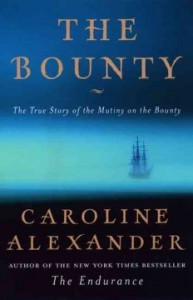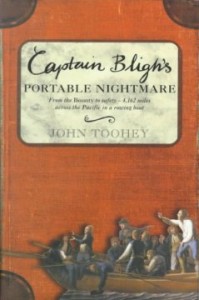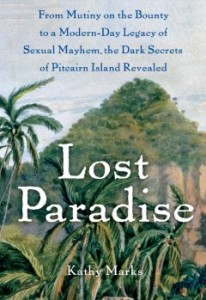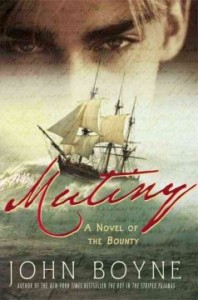The year 1917 was a difficult one worldwide. The First World War was draining the finances, manpower, and morale all the major European nations; the United States was dealing with an economic slump; the Russian Empire was crumbling under the weight of poor leadership and the rising tide of young revolutionaries. But on June 23, 1917 (exactly 98 years ago today), something remarkable happened that captured the attention of baseball fans across the United States, and has remained part of baseball lore to this day.
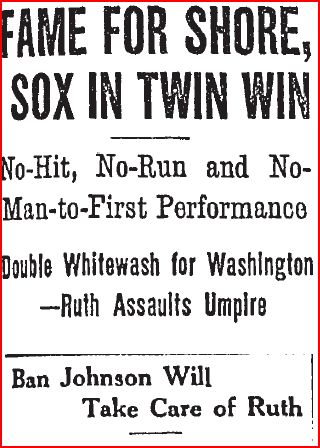
On that day, Babe Ruth took the mound to pitch the first game of a doubleheader between the Boston Red Sox and the Washington Senators. Umpire Brick Owens called Ruth’s first four pitches balls and awarded first base to the batter, Ray Morgan, setting off Ruth’s notoriously short temper. When Owens ejected both Ruth and his catcher, Pinch Thomas from the game. Ruth replied by slugging the umpire, for which he would later be fined $100 and suspended for ten games. With no notice, the Red Sox were forced to bring in Ernie Shore, a 24-year-old pitcher who had posted a 1.64 ERA in the 1915 World Series, to fill in for Ruth. With no time to warm up or throw any practice pitches, manager Jack Barry advised Shore, “just get us through this inning.”

During Shore’s opening pitch, Ray Morgan (who remained on first base during this whole brouhaha), tried to steal second. The new Red sox catcher, Sam Agnew, threw him out, registering the first out of the game.
But Ernie Shore didn’t need any help after that. He retired the next 26 Senators who took the mound without allowing a single baserunner. The game was originally listed as a perfect game (one of the most difficult achievements in baseball), but because Babe Ruth technically threw the first pitch of the game, it was recorded as a shared ‘no-hitter’ between Ruth and Shore. It was the first combined no-hitter in baseball history, and among the first among standing American League Teams still in existence today.
Shore missed the 1918 season because he enlisted in the military once the United States entered the First World War, and he was sold to the New York Yankees by then-manager Harry Frazee in 1919, a year before the infamous trade of Babe Ruth. Though he ended his career as a Yankee, it’s his performance with the Red Sox that secured him a place in the record books. With the announcement of the retirement of Pedro Martinez’s number on July 28, today seemed like a fitting time to celebrate the pitchers who have made the Red Sox great. And, frankly….it’s nice to have a good story to tell about the Red Sox these days, right?
If you’re looking to add some more baseball to your summer (with endings that won’t make you want to hit things and cry), here are some selections from our catalog:
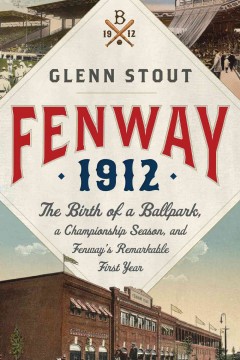 Fenway 1912 : the birth of a ballpark, a championship season, and Fenway’s remarkable first year: Glenn Stout’s book turns the focus away from the storied Red Sox to their equally-famous field, telling the story about the construction and creation of Fenway Park, beginning with the frigid day on which locals poured the cement foundation to the first World Series game, when grass was still being coaxed out of the recalcitrant Boston soil. This is a book for baseball fan everywhere, but locals are sure to find a world of fun facts, stories, and personalities in these pages to savor–and it is sure to make any visit to Fenway this summer that much more entertaining!
Fenway 1912 : the birth of a ballpark, a championship season, and Fenway’s remarkable first year: Glenn Stout’s book turns the focus away from the storied Red Sox to their equally-famous field, telling the story about the construction and creation of Fenway Park, beginning with the frigid day on which locals poured the cement foundation to the first World Series game, when grass was still being coaxed out of the recalcitrant Boston soil. This is a book for baseball fan everywhere, but locals are sure to find a world of fun facts, stories, and personalities in these pages to savor–and it is sure to make any visit to Fenway this summer that much more entertaining!
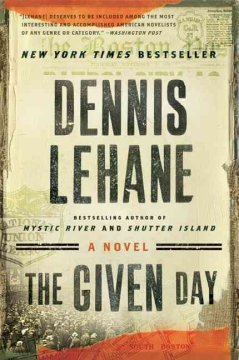 The Given Day: Dennis Lehane, plain and simple, is one of my favorite authors alive today, and this novel proved that he is as talented at writing epic historic fiction as he is at high-tension thrillers and mysteries. A subtle, thought-provoking tale set just after the First World War, Lehane spins a tale of two families, one black and one white, who are caught up in the tides of history, including the Great Flu Epidemic and the Boston Police Strike of 1919. Intertwined in this stories are real-life historic figures, not the least of which is Babe Ruth himself, a character who is both tragic and gripping in a way only Lehane can convey.
The Given Day: Dennis Lehane, plain and simple, is one of my favorite authors alive today, and this novel proved that he is as talented at writing epic historic fiction as he is at high-tension thrillers and mysteries. A subtle, thought-provoking tale set just after the First World War, Lehane spins a tale of two families, one black and one white, who are caught up in the tides of history, including the Great Flu Epidemic and the Boston Police Strike of 1919. Intertwined in this stories are real-life historic figures, not the least of which is Babe Ruth himself, a character who is both tragic and gripping in a way only Lehane can convey.
 The Catcher Was a Spy : The Mysterious Life of Moe Berg: This is quite the quirky book, but its a terrific piece of history for baseball fans, students of espionage and history alike. In this book, Nicholas Dawidoff uncovers the story of Moe Berg, not only had a 15-year career in baseball, catching for the Chicago White Sox and the now defunct New York Robins, but who was also a spy for OSS during the Second World War. Dawidoff emphasizes Berg’s incredible intellect: the man spoke upwards of 18 languages and read at least 10 newspapers a day, making him an ideal spy, ferreting out German nuclear secrets and corralling European scientists once the war was over. For those looking for a different kind of baseball history, this is definitely one to check out.
The Catcher Was a Spy : The Mysterious Life of Moe Berg: This is quite the quirky book, but its a terrific piece of history for baseball fans, students of espionage and history alike. In this book, Nicholas Dawidoff uncovers the story of Moe Berg, not only had a 15-year career in baseball, catching for the Chicago White Sox and the now defunct New York Robins, but who was also a spy for OSS during the Second World War. Dawidoff emphasizes Berg’s incredible intellect: the man spoke upwards of 18 languages and read at least 10 newspapers a day, making him an ideal spy, ferreting out German nuclear secrets and corralling European scientists once the war was over. For those looking for a different kind of baseball history, this is definitely one to check out.
 Faithful : two diehard Boston Red Sox fans chronicle the historic 2004 season: Those who think the era of correspondence is dead needs to read this book. Largely made up of emails between writers Stewart O’Nan and my beloved Stephen King, this is a book that allows readers to revel in the highs and lows, the heartache and the beauty of the unforgettable 2004 season. King and O’Nan manage to capture all the angst, anger, hope, and elation of fans everywhere in this book, but the charm in this book is in its unedited, unpolished structure. King and O’Nan become everyman-fans in this book, giving us all a voice. For an added treat, check out the audiobook, read by King and O’Nan with impressive verve and passion.
Faithful : two diehard Boston Red Sox fans chronicle the historic 2004 season: Those who think the era of correspondence is dead needs to read this book. Largely made up of emails between writers Stewart O’Nan and my beloved Stephen King, this is a book that allows readers to revel in the highs and lows, the heartache and the beauty of the unforgettable 2004 season. King and O’Nan manage to capture all the angst, anger, hope, and elation of fans everywhere in this book, but the charm in this book is in its unedited, unpolished structure. King and O’Nan become everyman-fans in this book, giving us all a voice. For an added treat, check out the audiobook, read by King and O’Nan with impressive verve and passion.
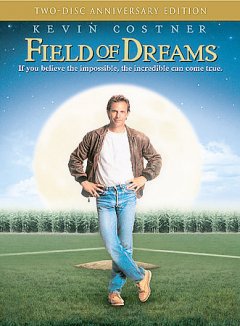 Field of Dreams: I can’t talk about baseball without citing this film. Rather than explain why, here is the monologue you will remember (the quote below has been edited for space. Do yourself a favor, and watch the full performance here.)
Field of Dreams: I can’t talk about baseball without citing this film. Rather than explain why, here is the monologue you will remember (the quote below has been edited for space. Do yourself a favor, and watch the full performance here.)
People will come, Ray…And cheer their heroes. And they’ll watch the game, and it’ll be as they’d dipped themselves in magic waters. The memories will be so thick, they’ll have to brush them away from their faces. People will come, Ray. The one constant through all the years Ray, has been baseball. America has rolled by like an army of steamrollers. It’s been erased like a blackboard, rebuilt and erased again. But baseball has marked the time. This field, this game, is a part of our past, Ray. It reminds us of all that once was good, and that could be again. Oh people will come, Ray. People will most definitely come.



